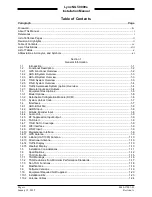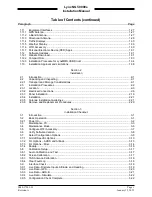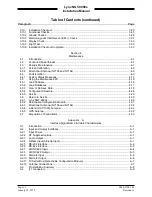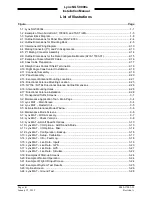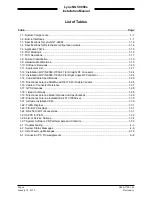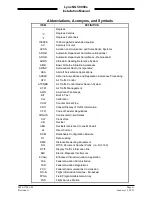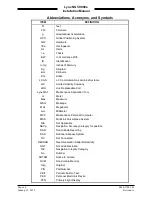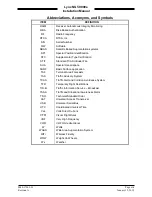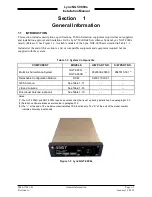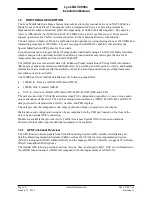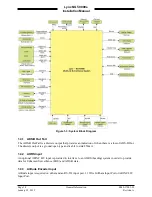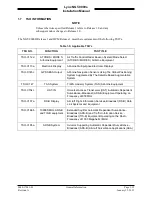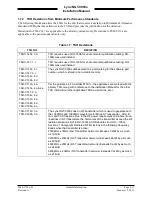
Lynx NGT-9000s
Installation Manual
1.2 FUNCTIONAL DESCRIPTION
The Lynx MultiLink Surveillance System (also referred to in this manual as the Lynx NGT-9000s) is a
Mode S Level 2 dens Class 1 Transponder with an integrated GPS receiver providing Automatic
Dependent Surveillance-Broadcast (ADS-B) output using a 1090ES (Extended Squitter). The unit also
receives ADS-B data via 1090ES and UAT (978 MHz Universal Access Transceiver). Some models
support optional Active Traffic Awareness System (TAS) or antenna Diversity functionality.
The unit replies to Mode A, Mode C and Mode S interrogations receiving interrogations at 1030 MHz and
transmitting responses at 1090 MHz. The unit is equipped with IDENT capability that activates the
Special Identification (SPI) pulse for 18 seconds.
Ground stations can interrogate Mode S Transponders individually using a 24-bit ICAO Mode S address,
which is unique to the particular aircraft. In addition, ground stations may interrogate the unit for its
transponder data capability and the aircraft's Flight ID.
The ADS-B provides own aircraft data with Enhanced Visual Acquisition (EVAcq) traffic information
that improves situational awareness and flight safety by providing aircraft position, velocity, and heading
information that is automatically transmitted to other aircraft and ground stations providing immediate
surveillance of air-to-air traffic.
The 1090ES and UAT ADS-B datalink have the following capabilities:
•
1090ES In - Receive ADS-B, ADS-R and TIS-B
•
1090ES Out - Transmit ADS-B
•
UAT In - Receives ADS-B, ADS-R and TIS-B, FIS-B, NOTAMS, and TFR’s
The unit also provides TAS traffic advisories when TAS configuration is enabled. A voice or tone audio
output announces traffic alerts. The unit has multiple transmit/receive ARINC 429, RS-422 and RS-232
data ports used to transmit data to traffic, weather, and PED displays.
The unit provides the transponder code, reply symbol and mode of operation to the display.
Maintenance and configuration setup can be accomplished via the USB port located on the front of the
unit or by an optional WiFi connection.
Models are available that provide Active Traffic Awareness System (TAS) function and antenna
Diversity. Both models require additional equipment to be installed.
1.2.1 GPS Functional Overview
The GPS function utilizes signals from Global Positioning System (GPS) satellite constellation and
Satellite-Based Augmentation Systems (SBAS) such as the USA Wide Area Augmentation System
(WAAS), European EGNOS, Indian GAGAN and the Japanese MSAS. Currently it supports WAAS and
WAAS compatible SBAS systems.
The internal GPS function provides position, velocity, time, and integrity (NIC, NAC etc.) information to
the ADS-B functions
and is ADS-B rule compliant with the requirements of AC20-165A.
Page 1-2
General Information
0040-17001-01
January 15, 2015
Revision A



